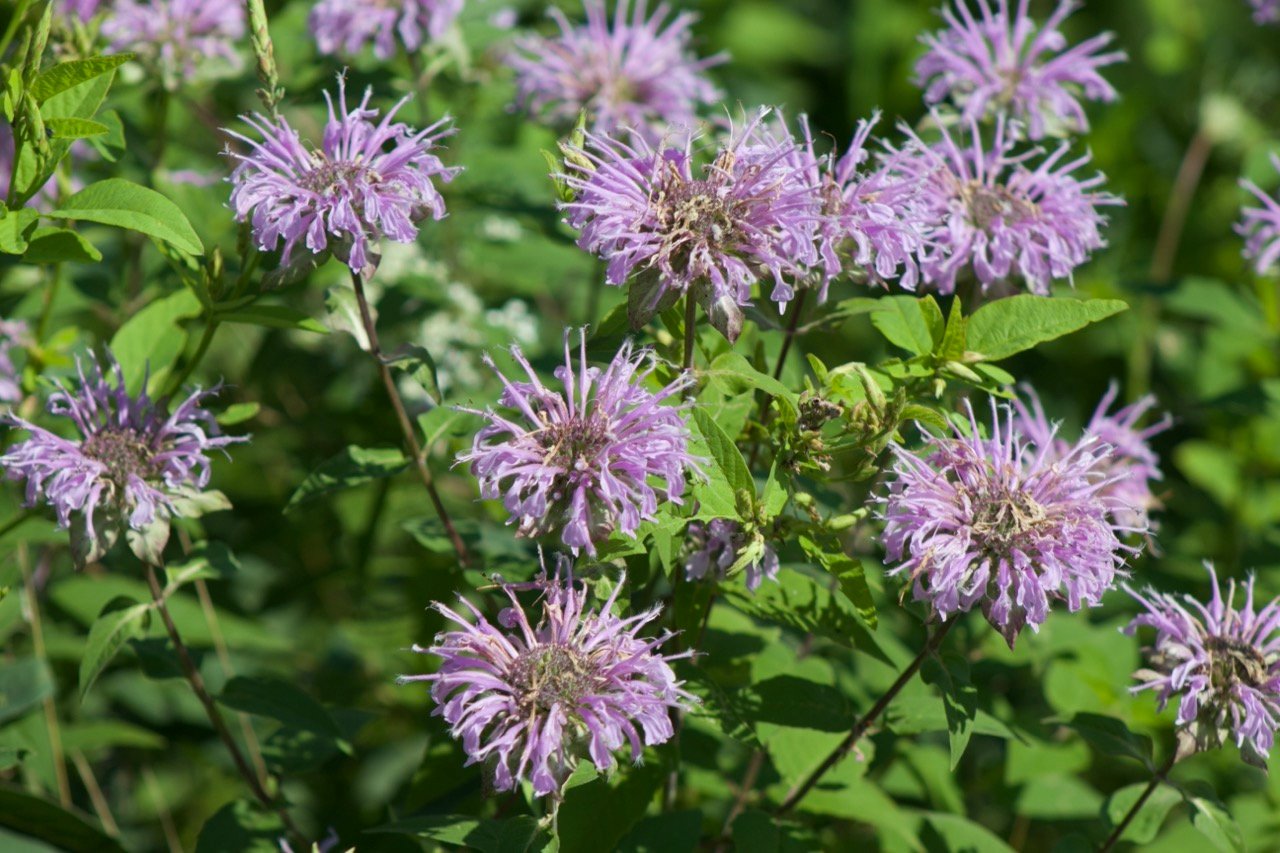With its lavender-pink blooms and minty scent, Wild Bergamot (Monarda fistulosa) brings pollinators and personality to any native garden. Its airy blooms and minty scent make it a garden favorite—not just for people, but for bees, butterflies, and hummingbirds too.
What is Wild Bergamot?
Wild Bergamot is a clump-forming perennial native to much of North America, commonly found in prairies, savannas, and open woodlands. A member of the mint family, it features distinctive tubular flowers that form shaggy, globe-like clusters. Its long blooming period and adaptability make it an excellent choice for native plant gardens and pollinator habitats.
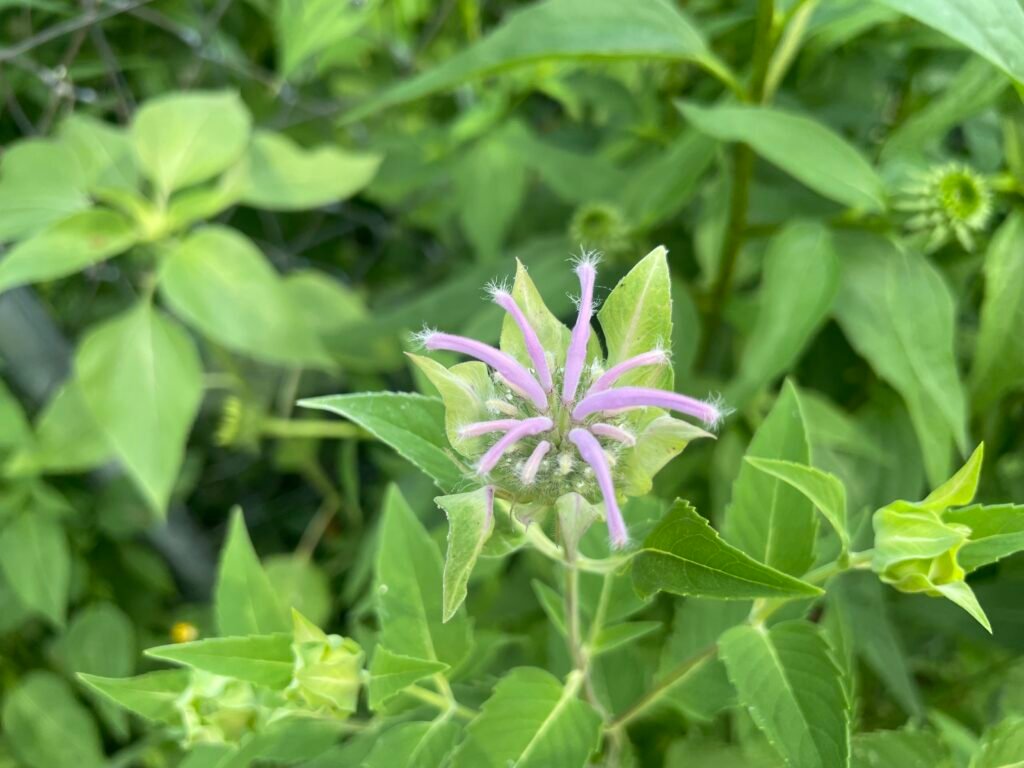
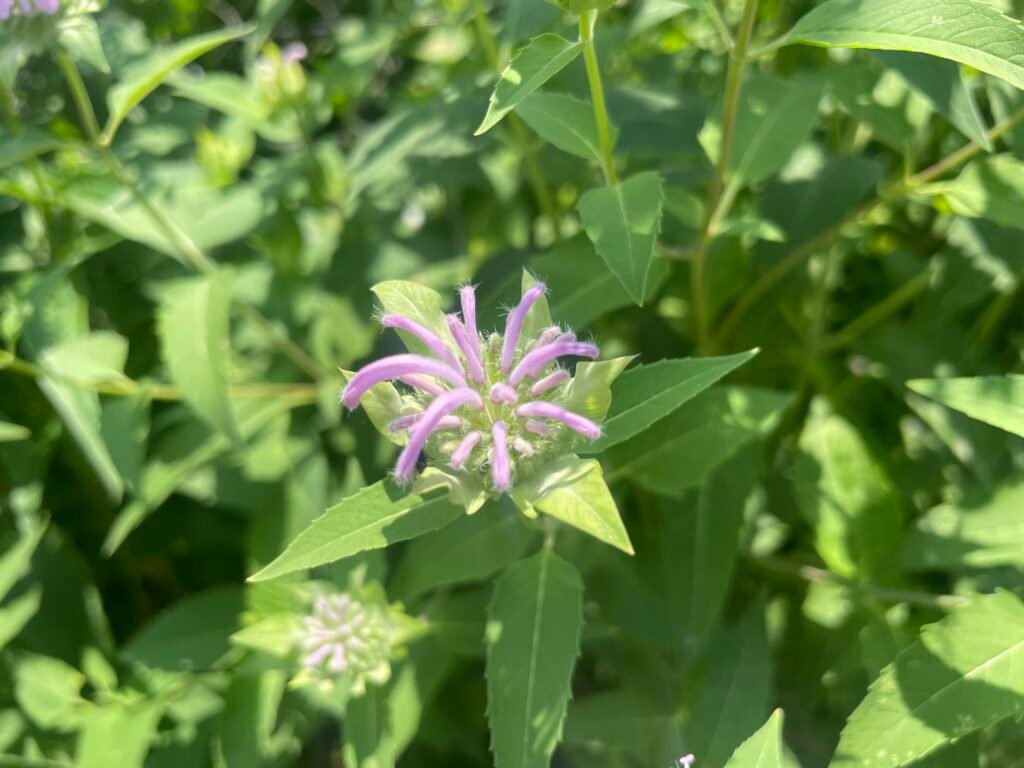
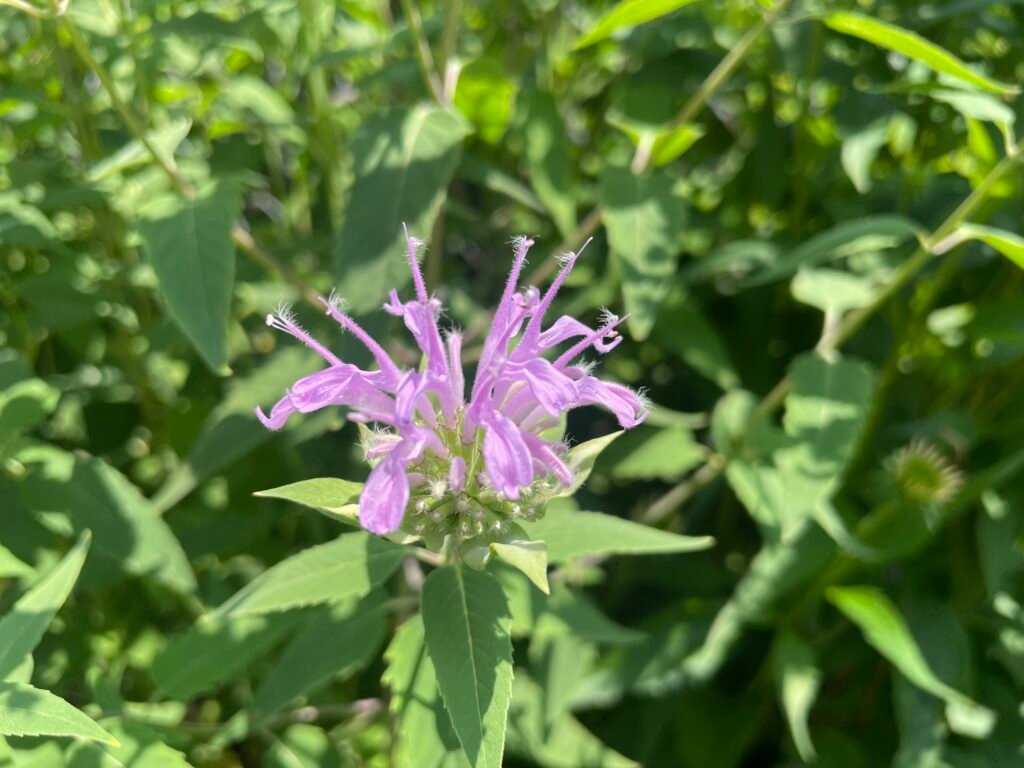
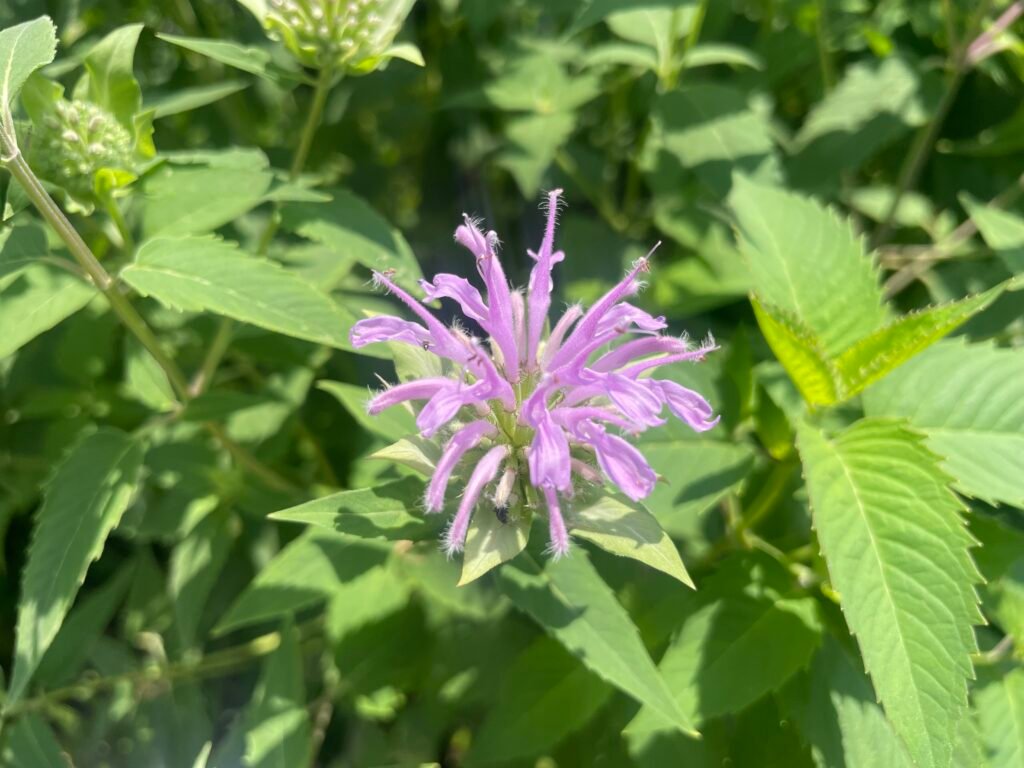
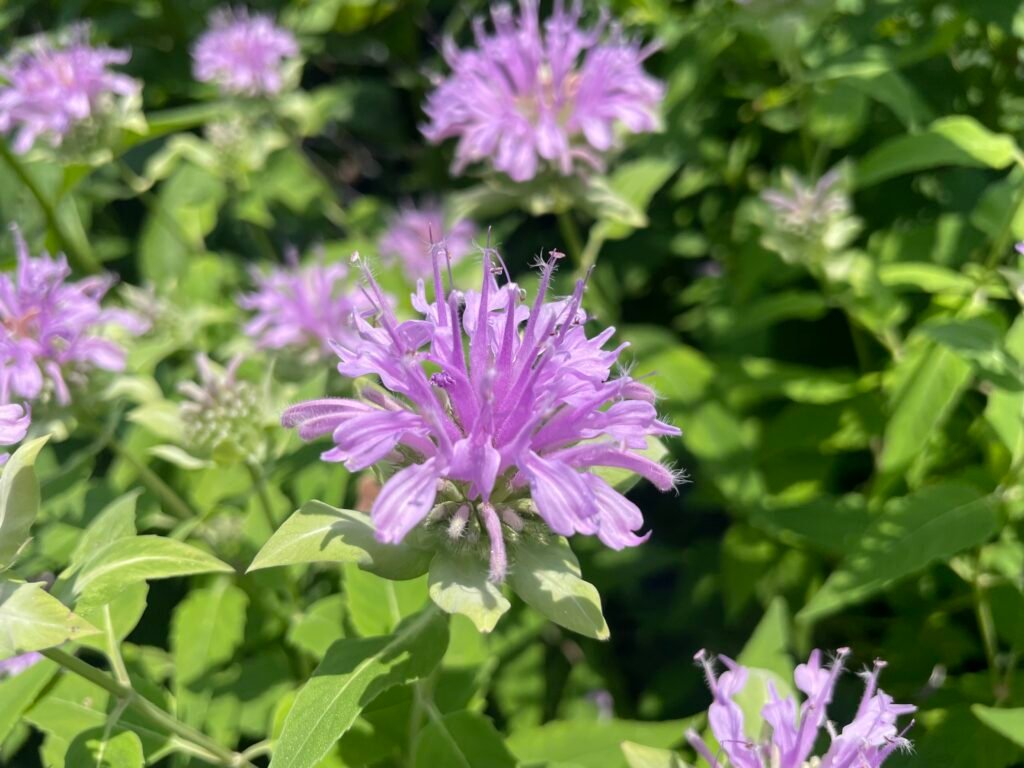
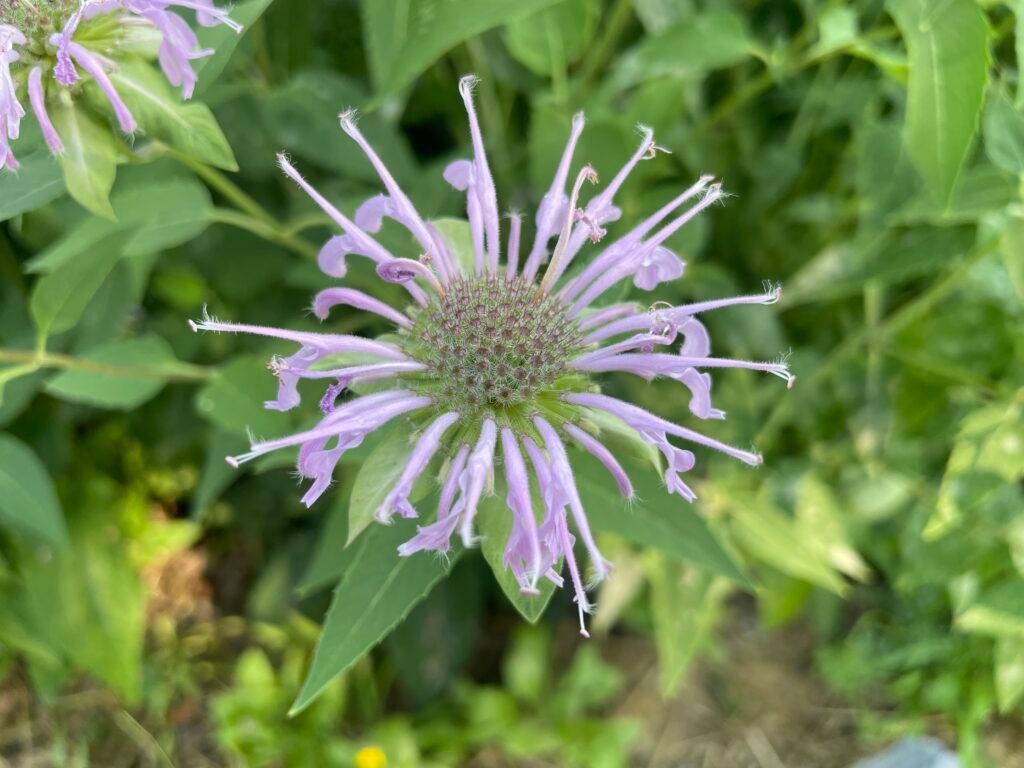
Botanical Details:
- Scientific name: Monarda fistulosa
- Family: Lamiaceae (Mint Family)
- Common names: Wild Bergamot, Bee Balm, Horsemint
- Height: 4 feet tall
- Bloom time: Midsummer to early fall (July to September)
- Flowers: Lavender to pink-lavender, clustered and fragrant
- Hardiness zones: USDA 3–9
Why Plant Wild Bergamot?
Hummingbird Favorite
The vibrant and fragrant blooms act as a beacon for hummingbirds, particularly during midsummer when other nectar sources may dwindle. Monarda fistulosa helps ensure a continuous food supply during a crucial season.
Bee & Butterfly Magnet
The Wild Bergamot plant is especially attractive to native bees, honeybees, and bumble bees. Its tubular flowers are also ideal for butterflies like Monarchs, Swallowtails, and Fritillaries, providing easy access to nectar.
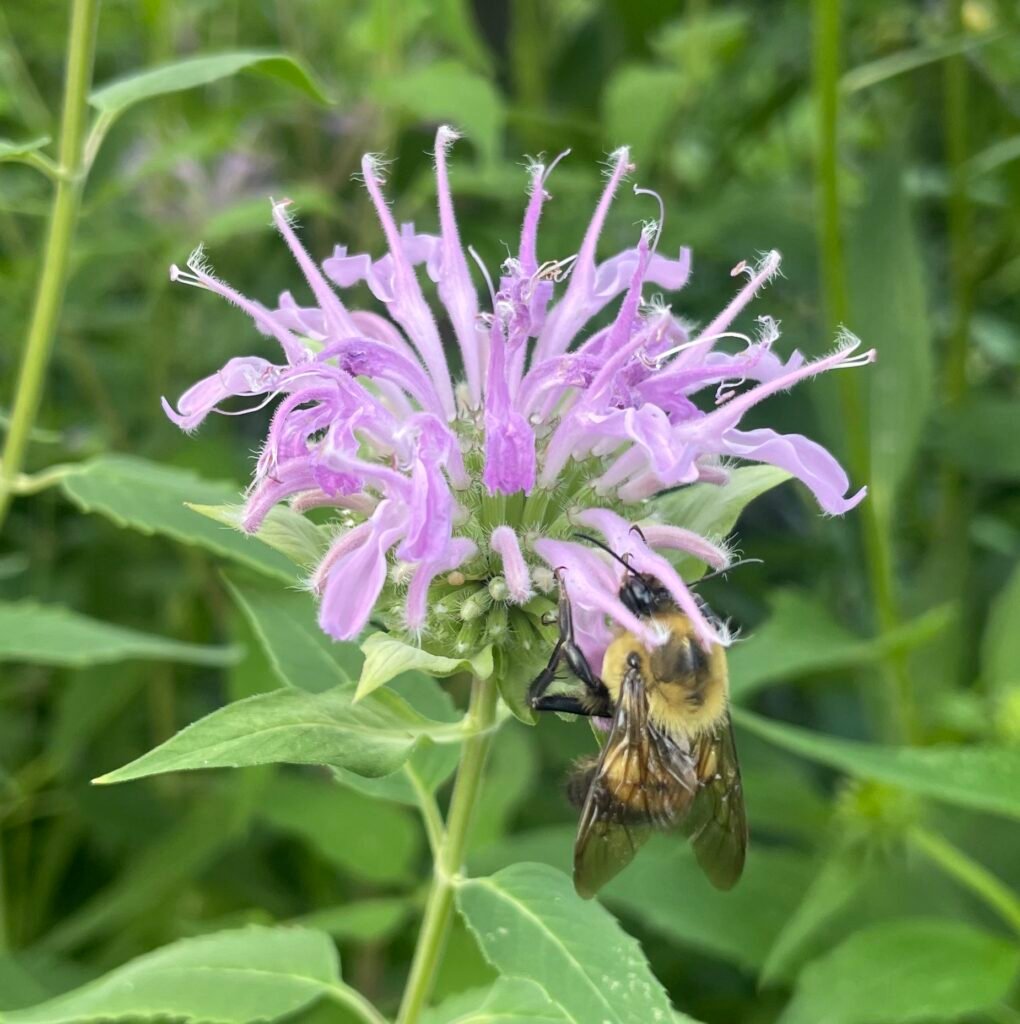
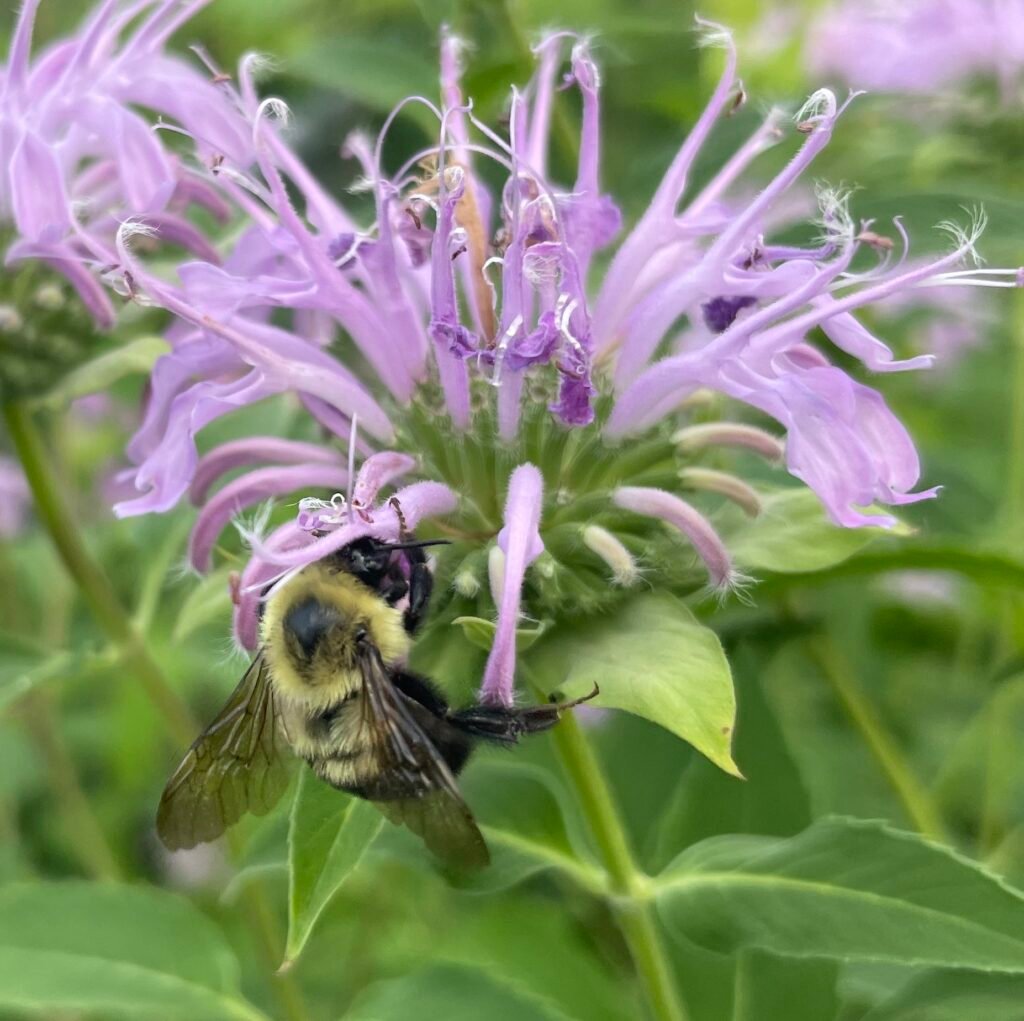
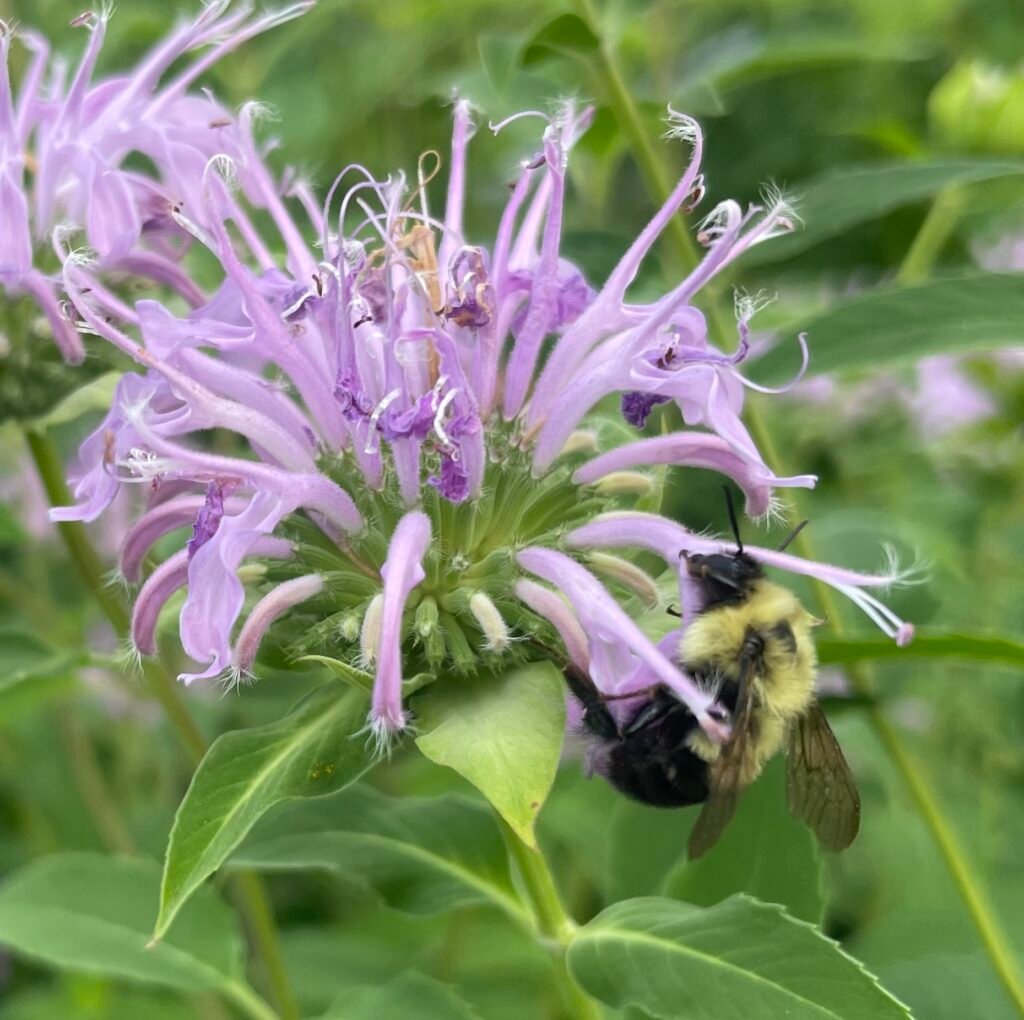
Growing Conditions
Sunlight:
- Thrives in full sun to part shade.
- Prefers at least 4–6 hours of sunlight daily for best flowering.
Soil:
- Tolerant of a variety of soils, from dry to moderately moist.
- Prefers well-drained loam or sandy soils.
- Drought-tolerant once established, making it ideal for savanna’s or dry prairies.
Water:
- Moderate water needs.
- Water regularly in the first year to establish deep roots.
Check out the hive
The Hive is a personalized native plant database, curated from scientific resources and tailored to your exact ecoregion. It offers detailed growing information for over 75 species.
How to Grow Wild Bergamot
Planting:
- Plant in spring or fall from seed, plug, or division.
- Planting from seed requires no cold stratification
- Seeds can be placed on bare soil with typically high germination rates
- Space 18–24 inches apart to allow for good air circulation (important for mildew resistance).
Maintenance:
- Deadhead to encourage continued blooming.
- Cut back to a few inches above the ground in late fall or early spring. Preferably in early spring letting the beneficial insects overwinter in the stems.
- Divide every 2–3 years to rejuvenate plants and control spread.
- Powdery mildew is common; ensure good spacing and air flow to minimize risk.
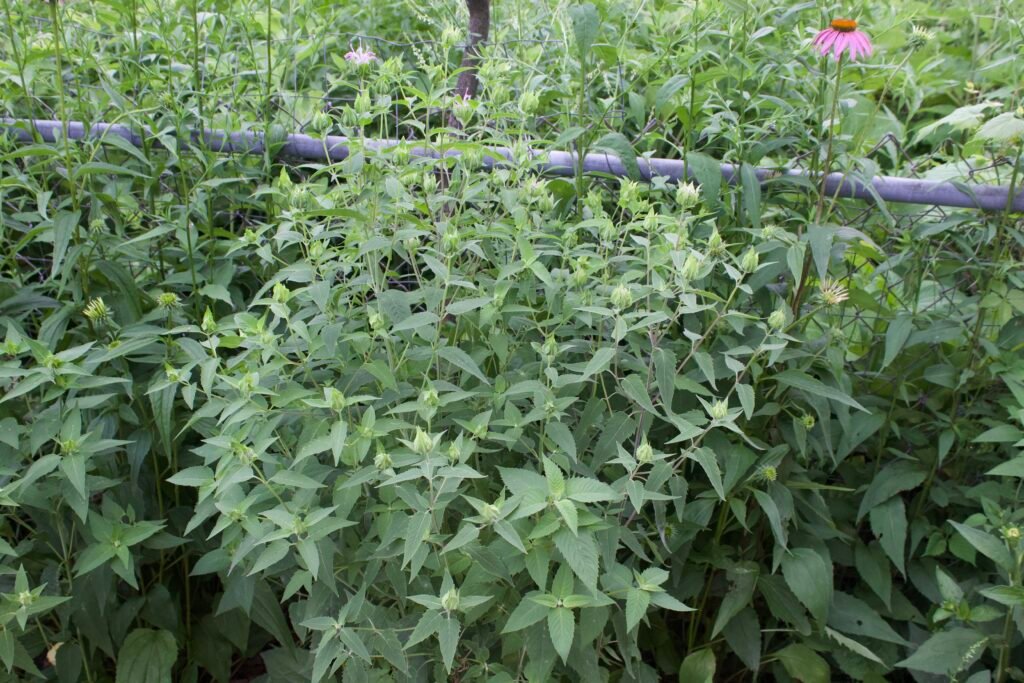
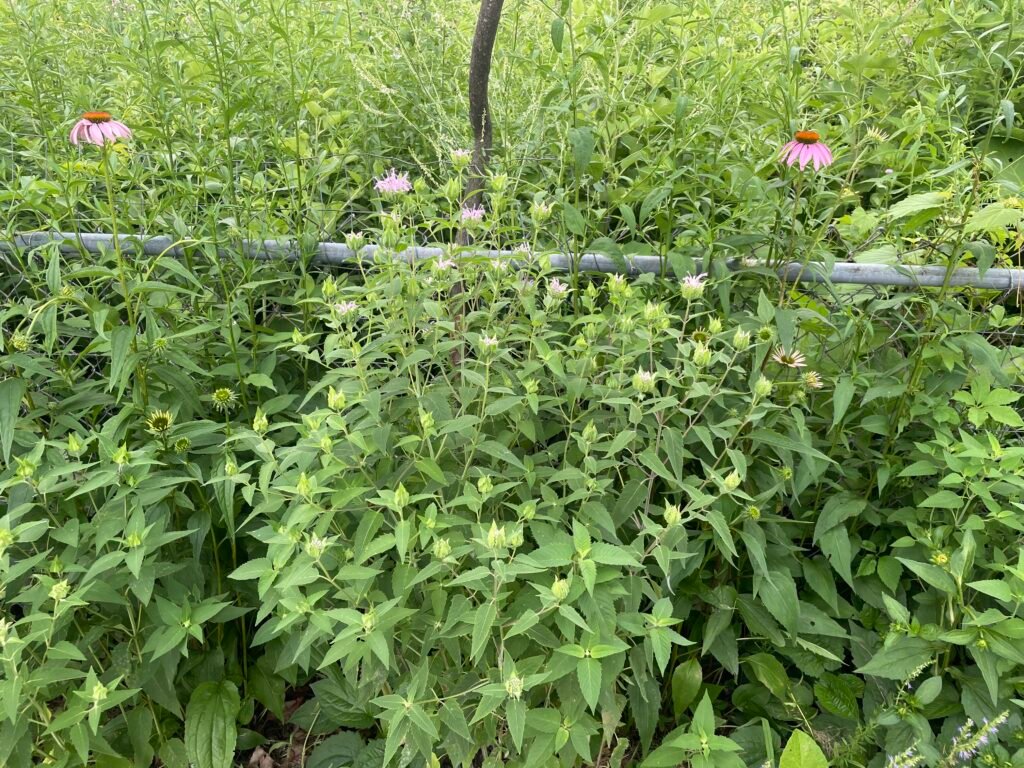
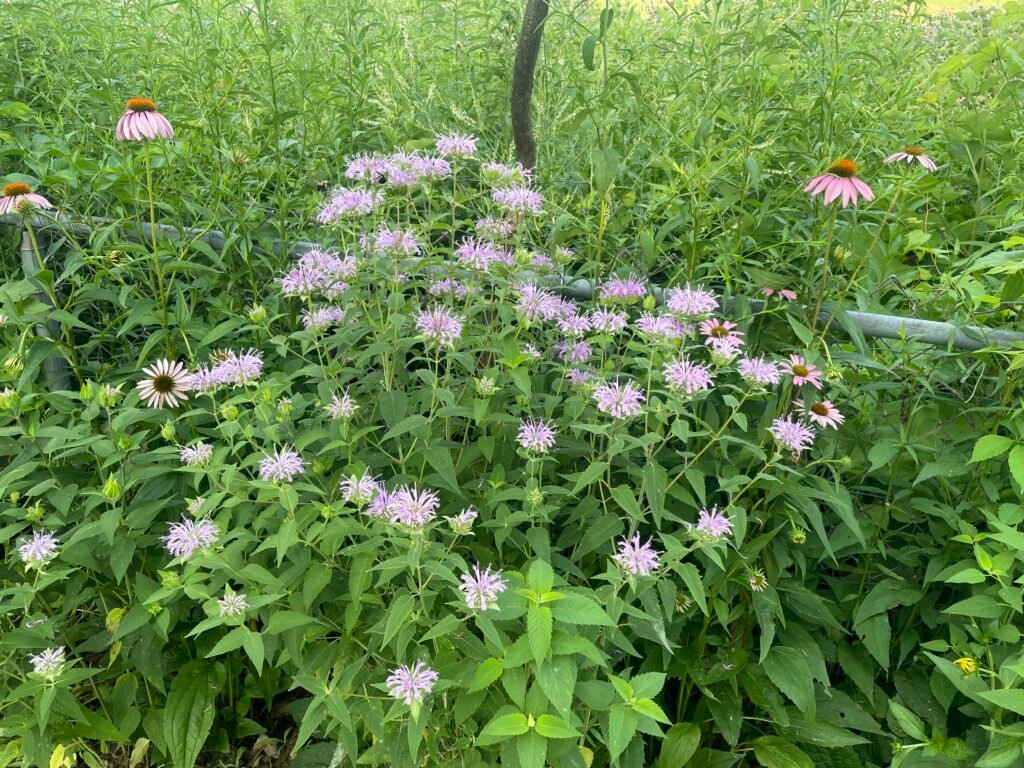
Companion Planting
Pair the Wild Bergamot plant with other native perennials for pollinators for a rich, biodiverse display:
- Purple Coneflower (Echinacea purpurea)
- Little Bluestem (Schizachyrium scoparium)
- Butterfly Milkweed (Asclepias tuberosa)
- Black-eyed Susan (Rudbeckia hirta)
These combinations support a wide variety of pollinators while creating stunning, layered displays of native color and texture.
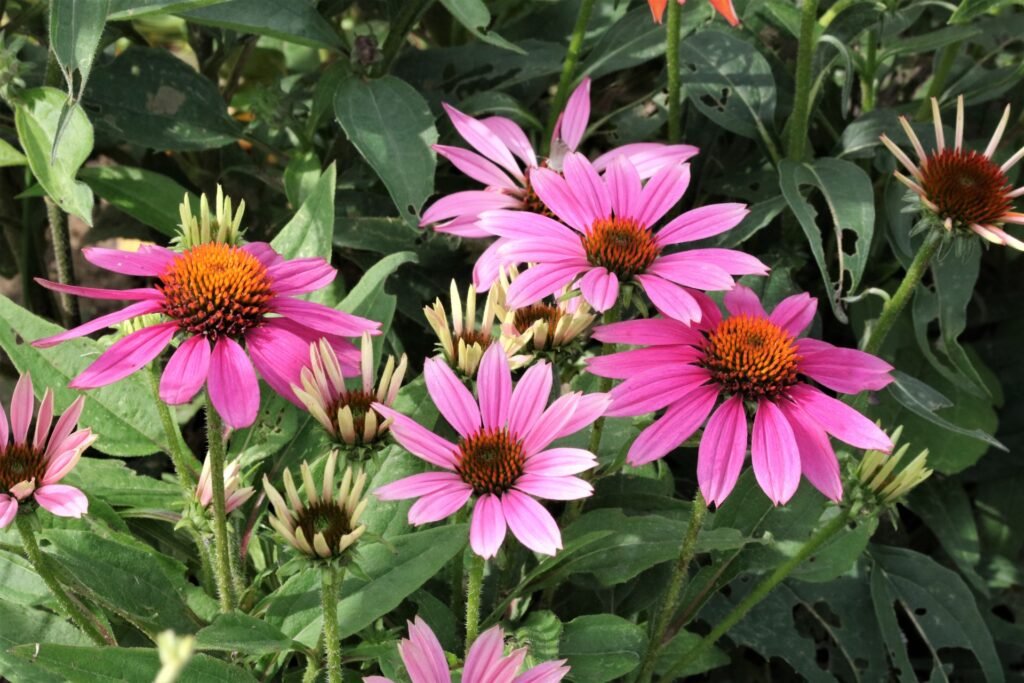
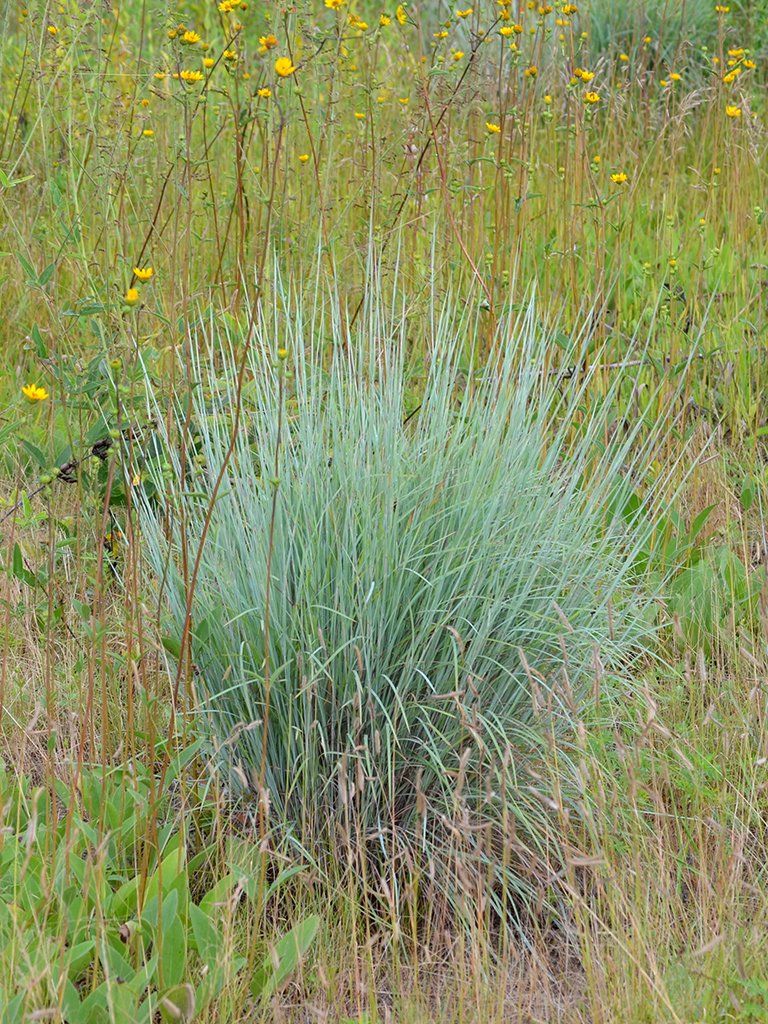
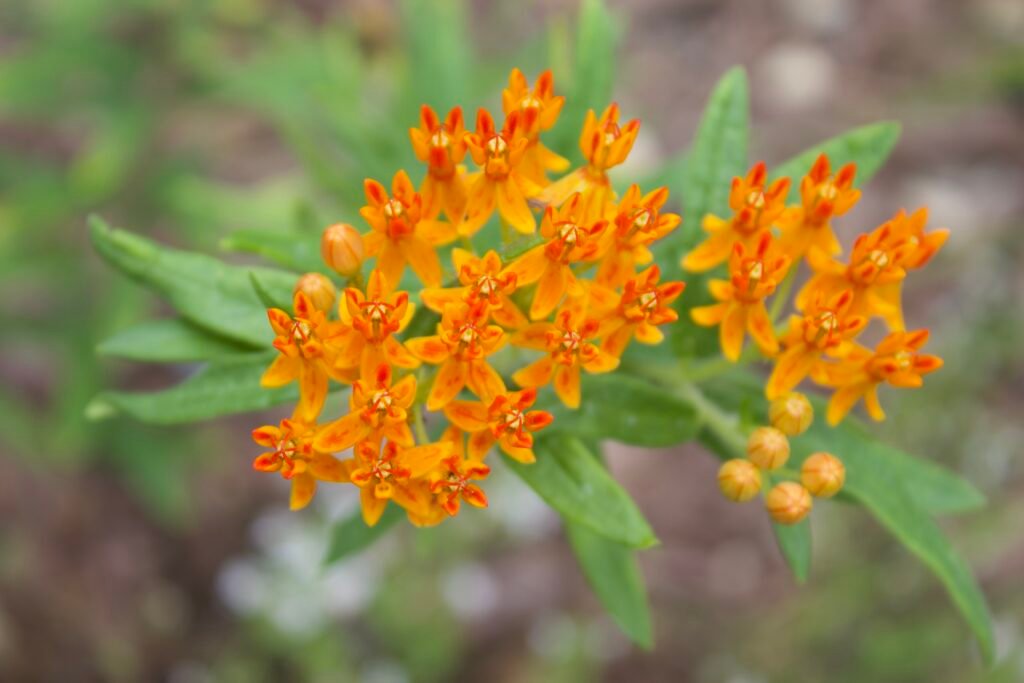
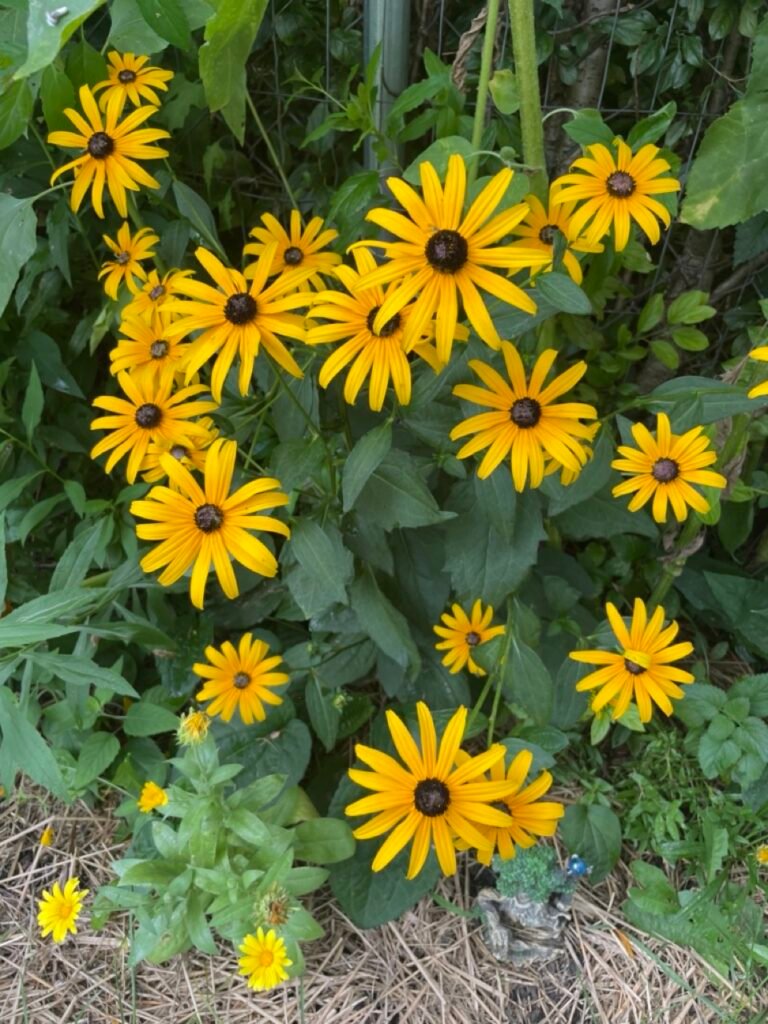
Planting Wild Bergamot Contributes To:
- Supporting native bees and butterflies
- Enhancing the fragrance and biodiversity of your garden
- Offering medicinal and culinary benefits (leaves can be used for tea)
- Restoring native prairie ecosystems and supporting resilient landscapes
Final Thoughts
Wild Bergamot isn’t just a pretty face—it’s a pollinator magnet, a breeze to grow, and one of my personal favorites. The flowers are weird in the best way, and the fragrance alone earns it a spot in any native garden. Whether you’re planting a prairie, a pollinator patch, or just want something that shows up reliably every summer, Monarda fistulosa doesn’t disappoint. And watching bumble bees shove their whole heads into those tubes? Honestly, that might be the best part.

